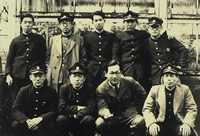 |
| photograph by Naruaki Onishi |
|
The process in which an individual can be created from just a single cell that is the fertilized egg is one that everybody finds astonishing. Dr. Yanagimachi began his research in mammalian reproduction in 1960s by directly focusing on this astonishment. Perhaps this was a little foolhardy. He has consistently worked in this field since then, however, and succeeded in creating a cloned mouse from a somatic cell in 1997 using his own techniques.
This was not the first mammal to be cloned, as a sheep was successfully cloned shortly before that. There had been several attempts to clone the mouse, the laboratory animal, and it was thought to be very difficult. Therefore, it was one of the great achievements in the history of biological research.
The cloning of the sheep was closely related to its practical utility, but the cloning of the mouse was just one form of reproductive research. Dr. Yanagimachi has said that he became aware of the sophistication of the reproductive process in nature through this research.
Reproduction is the basis of creating an individual. The research into mammals in particular clarified the relationship of reproduction with our understanding of humans. Therefore, we must make the basis of our research the feeling behind the attempt to understand living creatures themselves and the philosophy of life and human beings, rather than merely the science of substances to which modern biology tends.
Today, researchers from around the world who wish to study with Dr. Yanagimachi, including those from Japan, visit him in Hawaii to come in contact with his message that technology and philosophy must be creative. |


